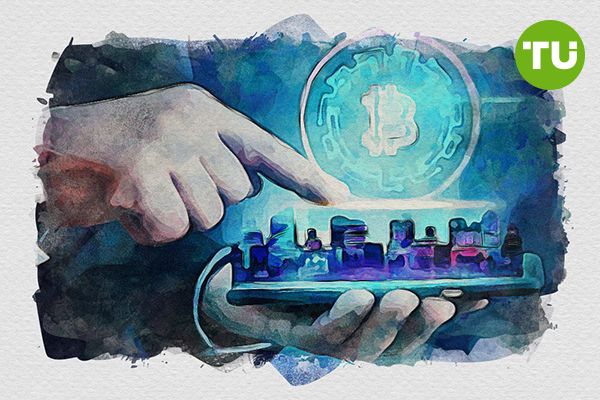Blockchain and government finance: Transparency-control dilemma
 Blockchain and government finances
Blockchain and government finances
Former Binance CEO Changpeng Zhao believes that governments worldwide should use blockchain to monitor spending and ensure transparency.
At first glance, the idea seems logical. Blockchain is not just a technology but a powerful tool for combating corruption, financial fraud, and misallocation of budget funds. However, a deeper analysis reveals a critical dilemma: integrating blockchain into government finances is not only a step toward transparency but also a potential mechanism for total control over the economy and citizens.
Blockchain as a mechanism against corruption
One of blockchain’s key advantages is the immutability of records. Unlike traditional accounting systems, where data can be altered, deleted, or concealed, blockchain permanently records every transaction. This means:
— any citizen can verify how public funds are spent.
— officials cannot siphon money through fictitious tenders or inflated contracts.
— the distribution of budget resources becomes transparent and automated.
For example, if $1 billion is allocated for road construction, users can track in real-time which companies received the funds, what work was completed, and how much money remains.
Loading...
A similar approach is already being tested in Estonia, where blockchain is used to store medical records, government contracts, and even election results. However, managing specific sectors with blockchain is one thing, while transitioning an entire national financial system to it is quite another.
How governments can use blockchain
If every government transaction were recorded on the blockchain, several scenarios would emerge:
— transparent public spending: Taxpayers would see exactly how their money is used.
— automation of government finances: Smart contracts could eliminate human error in distributing subsidies and pensions.
— crackdown on the shadow economy: All financial flows would be traceable, making tax evasion and money laundering more difficult.
However, a fundamental question arises: will such a blockchain be decentralized (independent of a single authority), or will it remain under full government control?
Where does transparency end and control begin?
If governments establish full control over blockchain networks, the technology could evolve from a transparency tool into a mass surveillance system. Imagine a scenario where the state not only tracks its spending but also monitors all financial transactions of its citizens. The potential consequences include:
— complete tracking of personal expenses. Authorities would see who spends money where and on what.
— restrictions on financial freedom. The government could impose «targeted» budgets, allowing money to be spent only on pre-approved categories.
— digital censorship. Certain organizations or individuals could be denied access to financial services.
These scenarios are no longer science fiction. In China, the social credit system already impacts citizens' financial behavior, influencing their access to loans, transportation, and job opportunities. If combined with blockchain, governments could gain an unprecedented level of control.
Central Bank Digital Currencies (CBDCs)
Many countries are already developing Central Bank Digital Currencies (CBDCs) based on blockchain technology. The EU is advancing the digital euro, the U.S. is researching the digital dollar, and China is actively testing the digital yuan.
However, the difference between traditional cryptocurrencies (e.g., Bitcoin) and state-controlled CBDCs is enormous:
— Bitcoin is decentralized and not controlled by any government.
— CBDCs are fully controlled by central authorities.
This means that in the future, governments could automatically restrict citizens' spending, impose negative interest rates, or even "expire" money based on political or economic conditions.
Which blockchain is best for government use?
Choosing the right blockchain is critical for ensuring both transparency and security in government financial management. Here are some of the most promising options:
Ethereum
Ethereum is the leader in smart contracts and decentralized applications. It is one of the most widely used blockchains, making it an ideal choice for transparent financial management. With Ethereum 2.0 (Proof-of-Stake), energy consumption has significantly decreased, making it a more sustainable option.
Cardano
Cardano is known for its scientific approach and focus on sustainability. It uses Proof-of-Stake, making it energy-efficient while ensuring security and reliability for financial operations.
Polkadot
Polkadot is designed to integrate multiple blockchains, making it particularly valuable for government systems operating across different platforms. Its parachain architecture enables scalability and flexibility, allowing infrastructure to adapt to specific national needs.
Solana
Solana stands out for high speed and low transaction costs, making it optimal for frequent transactions. With a capacity of up to 65,000 transactions per second, it offers high scalability, while its low fees allow for cost-effective operations. This makes Solana ideal for applications that require instant interaction.
BNB Chain
BNB Chain is a high-performance blockchain designed for scalability and cost efficiency. Using Proof of Staked Authority (PoSA), it combines low fees and high-speed processing, making it attractive for government use. However, its centralization due to a limited number of validators raises concerns about control and potential vulnerabilities.
Tezos
Tezos is notable for its self-upgrading mechanism, allowing for improvements without network splits (forks). It offers flexibility, long-term sustainability, and security, making it a strong option for managing and storing sensitive government data.
Thus, if decentralization and a well-established ecosystem are priorities, Ethereum is the best choice. If scalability and low costs are crucial, Solana or Polkadot may be better options. For sustainability-focused governments, Cardano or Tezos would be ideal.
Loading...
Where is the balance?
The integration of blockchain into government systems is inevitable. The real question is what form this blockchain will take — whether it will be decentralized and transparent, ensuring citizens have equal access to information, or centralized and government-controlled, turning technology into an instrument of mass surveillance.
Changpeng Zhao may be right—blockchain has the potential to make government finances transparent. But if this technology falls into the wrong hands, we may end up in a world where every financial transaction is not only recorded but also approved by the state.
The ultimate question remains: are we ready to entrust governments with absolute control over our money?













































































































































